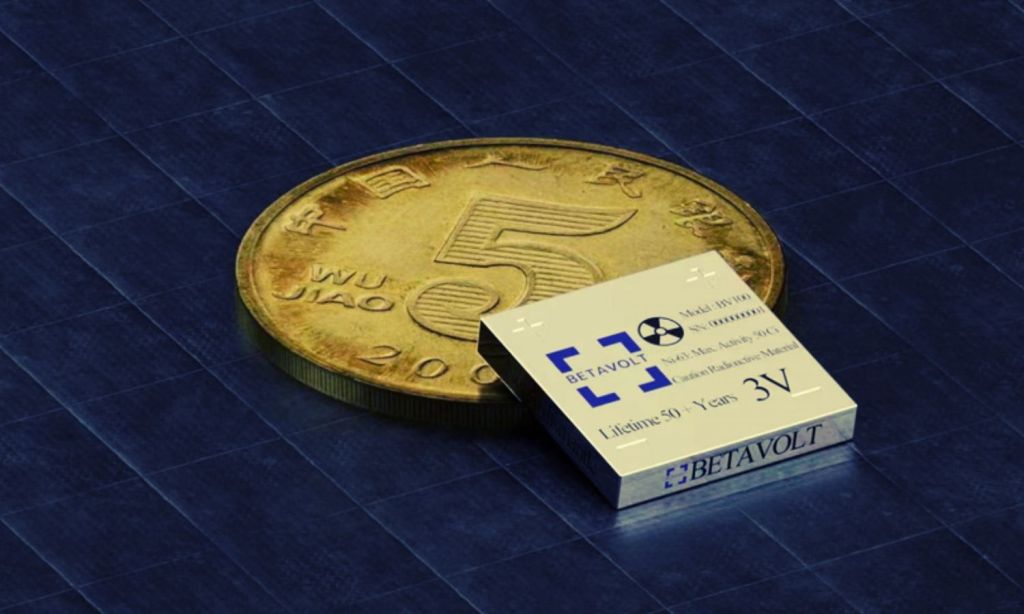The future of technology promises both wonder and terror. For example, imagine never having to charge your phone again using highly advanced battery technology. Now imagine that that same technology was used to power drones that would always be in the sky above you.
Enabling both inevitabilities is Beijing company Betavolt, which has recently announced the creation of a miniature battery smaller than a coin that can hold a charge for over 50 years. The secret to its longevity? The battery is powered by nuclear technology.
Atomic batteries were long the focus of both the US and the USSR during the 1960s space race. Currently, thermonuclear batteries are only operated in space and the idea of mass-producing them for civilian use is laughable. Those batteries are huge, hot, and highly dangerous.
Yet, the civilianisation of nuclear technology is a long-term goal of Chinese tech development. Atomic batteries generate electricity, rather than store it, doing away with the idea of charging and discharging as electrochemical batteries do. In doing so, atomic batteries can’t explode or catch fire, they don’t change based on their environment, and they give off no radiation. Harnessing the previously theoretical tech would be game-changing and Betavolt’s latest achievement brings such a vision very close to reality indeed.
The company has said, in a press statement, that their batteries have “have entered the pilot stage and will be put into mass production on the market.” They envision their use in space exploration, AI tools, medical devices, drones, and robots.
Concerningly, the company’s website features robot wasps, presumably powered by their batteries, under the heading ‘military equipment’ — yet another idea pinched from Black Mirror.

The battery works by using sheets of incredibly thin diamond semiconductors to sandwich layers of radioactive nickel which capture the electrons from it as it decays. While their first such example generates just 3 volts, the company notes the batteries can be used in parallel with dozens or hundreds stacked together. They plan to launch a 30v battery by 2025.
“If policies permit, atomic energy batteries can allow a mobile phone to never be charged, and drones that can only fly for 15 minutes can fly continuously,” the company writes.
The concept of a nuclear battery, as above, has been around for a long time. One of the ships that helped build the Panama Canal in the late 60s and early 70s was powered by a nuclear battery.
MIT has been working on a project to develop car-sized nuclear reactors that could be deployed wherever power is needed without being required to connect to the grid. These plans have yet to get as far, or as small as the Chinese example here, although they have been tested.
Doing away with big, polluting power stations and shifting towards a decentralised power network could be a vital shift in having a functioning zero-carbon economy, analysts argue. With the adoption of this technology on a mass scale, it could completely change the structure and impact of our cities and urban planning. The reduction in greenhouse gas emissions alone would be hugely significant.
Related: Big Batteries Are Coming to Aus But Would They Solve the Energy Crisis?
Related: Are We Going Backwards on Renewables?
Read more stories from The Latch and subscribe to our email newsletter.







